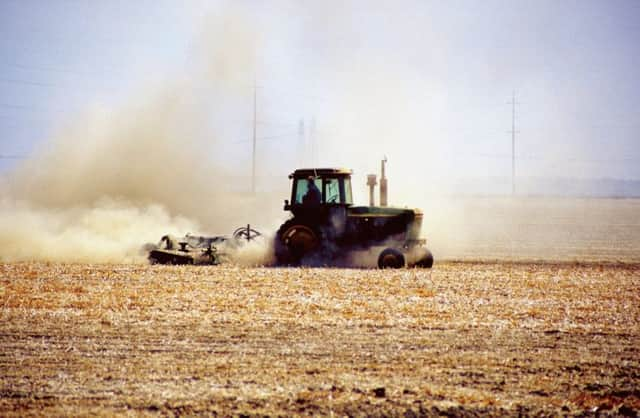Farming in harmony with wildlife


The Land Reform Review Group’s proposals for radical change in the ownership of land in Scotland published at the end of May this year are of no small consequence. Two years in the gestation and fraught with much politicking, their report included a proposal for the absolute right to buy for some agricultural tenants, those few thousand individuals holding secure ’91 Act tenancies.
The upshot of this proposal will be an argument about the capital value of agricultural land when capital values are the least of Scottish agriculture’s problems. It is income – or rather the lack of it – where the true problem lies and which is having damaging long-term consequences for our land and our environment.
Advertisement
Hide AdAdvertisement
Hide AdBefore the Act of Union in 1707 Scotland had faced a series of devastating famines, with wet summers and low temperatures crippling agricultural production. In the 300 years since, technology has driven a remarkable transformation in agriculture. Where once a single seed sown produced four, today the ratio is about 1:60 for wheat, barley and oats, the staple crops of modern cereal farming. Improved genetics have transformed poultry, pig and dairy sectors too, so food is now remarkably cheap and famine in Scotland a very distant prospect. Globalisation means that we expect a bewildering array of foodstuffs to be available all year round and at a fraction of the cost faced by our forebears.
Greater prosperity and a growing population in the early 19th century prompted investment in farms, steadings, cottages and (now very valuable) farmhouses. The world-wide technological change since has driven sweeping changes in the structure of farming businesses in Scotland. Tractors, an innovation in the 1920s, are now computer-controlled and satellite-guided behemoths. Combines capable of harvesting 200-300 tonnes of cereals in a day are commonplace and all operate across old farm boundaries.
The result is that the industry has shed labour – and farmers – and specialisation is now the order of the day. Where once a traditional lowland farm (like mine) would have had a wide range of crops and enterprises under a single management, today that is increasingly rare. If you see potatoes, vegetables or soft fruit growing in a field they will have little to do with the man in the farmhouse. The farmhouse, with the exception of ’91 Act tenancies where time has stood still, is probably occupied by a city commuter seeking the rural idyll.
Intensification and globalisation are not all good. It used to be that farming and the environment were in step, but no longer. The index for farmland birds published in The State of the UK’s Birds 2013 shows a continuing decline. The population of grey partridges – the quintessential farmland bird – has declined by 91 per cent since 1970. In the partridge’s case, the widespread use of herbicides has limited the availability of broadleaved weeds which are the key host plants for the insects that the chicks rely on. SNH’s report on Trends of Breeding Farmland Birds in Scotland published last October describes stable populations of the seed eaters, for example yellowhammers, which may have benefitted from targeted measures, but an accelerating decline in skylarks. The switch from hay, harvested from July onwards, to silage, which is cut in June, is bad news for nesting corn buntings. Clearly there is an urgent need for farmers to farm wildlife back into the environment where they have (accidentally) farmed it out.
Increased productivity, globalisation and the concentration of market power in a few hands has often pushed prices below the cost of production. In many cases, even with EU subsidy – and that is under threat – farmers cannot make a living from agriculture alone. If their business is financially unsustainable it is most unlikely that their operations will be environmentally sustainable. Farming is “living off the depreciation”, and either the financial (machinery and buildings) or natural (soil, water, carbon) capacity of farms is being run down. Because so much of our food is imported the problems are masked, but the same problems are likely to be common around the world. We are importing others’ natural capital as well as their food and globally the long-term sustainability of agriculture must be in question. For the future, society’s demands from agriculture will play a large part in the shape of farming operations.
Increasingly land is expected to deliver “ecosystem services” as well as food, but these are not easy to measure or value. We recognise them: clean water, fresh air, birdsong… but haven’t as yet found a mechanism for paying farmers for delivering them. How we reward farmers for accruing natural capital (which is of benefit to us all) when it is not in the price of food is the great challenge of the 21st Century. A spat over tenure and capital values is an unnecessary distraction.
• Edward Baxter is a Leaf (Linking Environment and Farming) farmer from Fife currently working toward a PhD
SEE ALSO